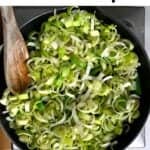This post may contain affiliate links. Please read our disclosure policy.
If you want a versatile ingredient that’ll add a boost of extra nutrients to everything from scrambled eggs to casserole, get yourself acquainted with our old friend, the leek. Learn how to cut leeks and how to cook leeks following my easy steps.
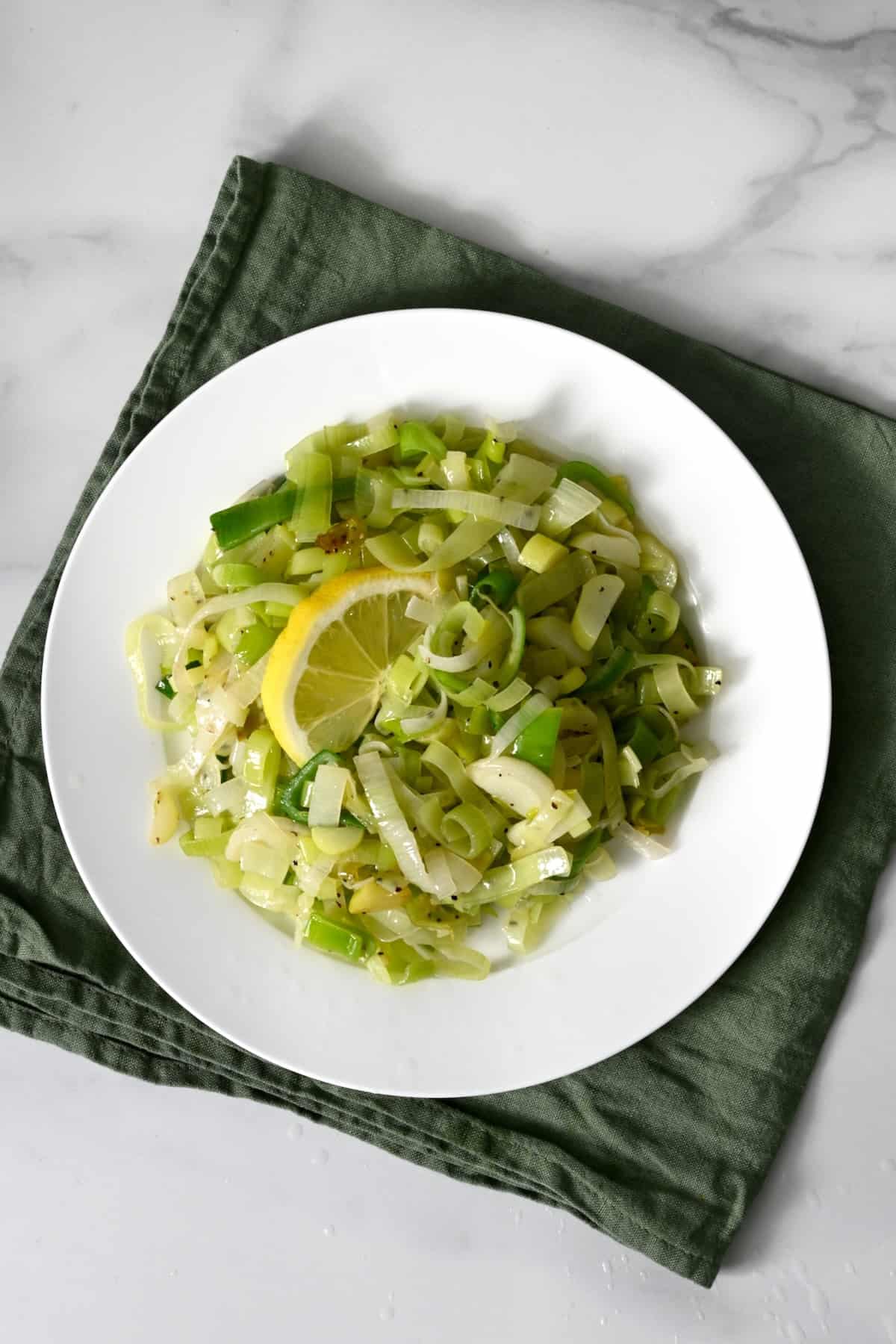
One of the biggest things I hear from new healthy eaters is that they don’t know how to cook vegetables. The prospect of steaming endlessly is boring – and takes away flavor. So learning how to cook vegetables properly is one of my great missions. If you’re wondering how to cook leeks in a way that is delicious, but still nutritious, I’ve got you covered.
If you are looking to increase the number of veggies you have in your diet, a vegetable like a leek is a great place to start. You can even hide them in kids’ meals without any fuss from picky eaters.
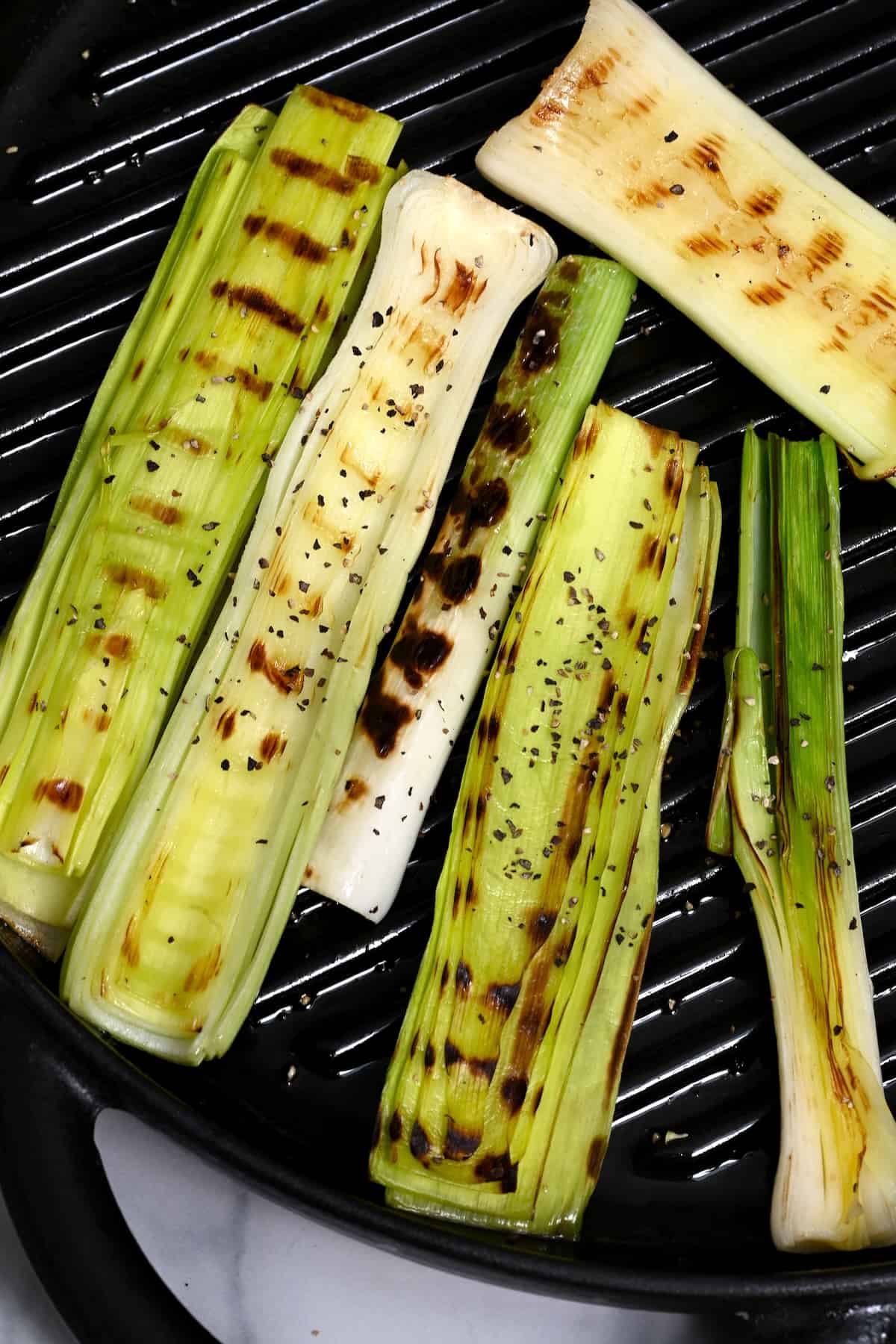
Want to save this recipe?
What Are Leeks
Part of the onion family, the leek is a spring vegetable that is often used as a base for soups, stews, and much more. Crunchy and firm when raw, only part of the leek can be eaten – the dark green leaves are not edible. You can find leeks in any average grocery store, or you can forage for wild leeks – known as ramps – which grow in the forests of Eastern Canada and the USA.
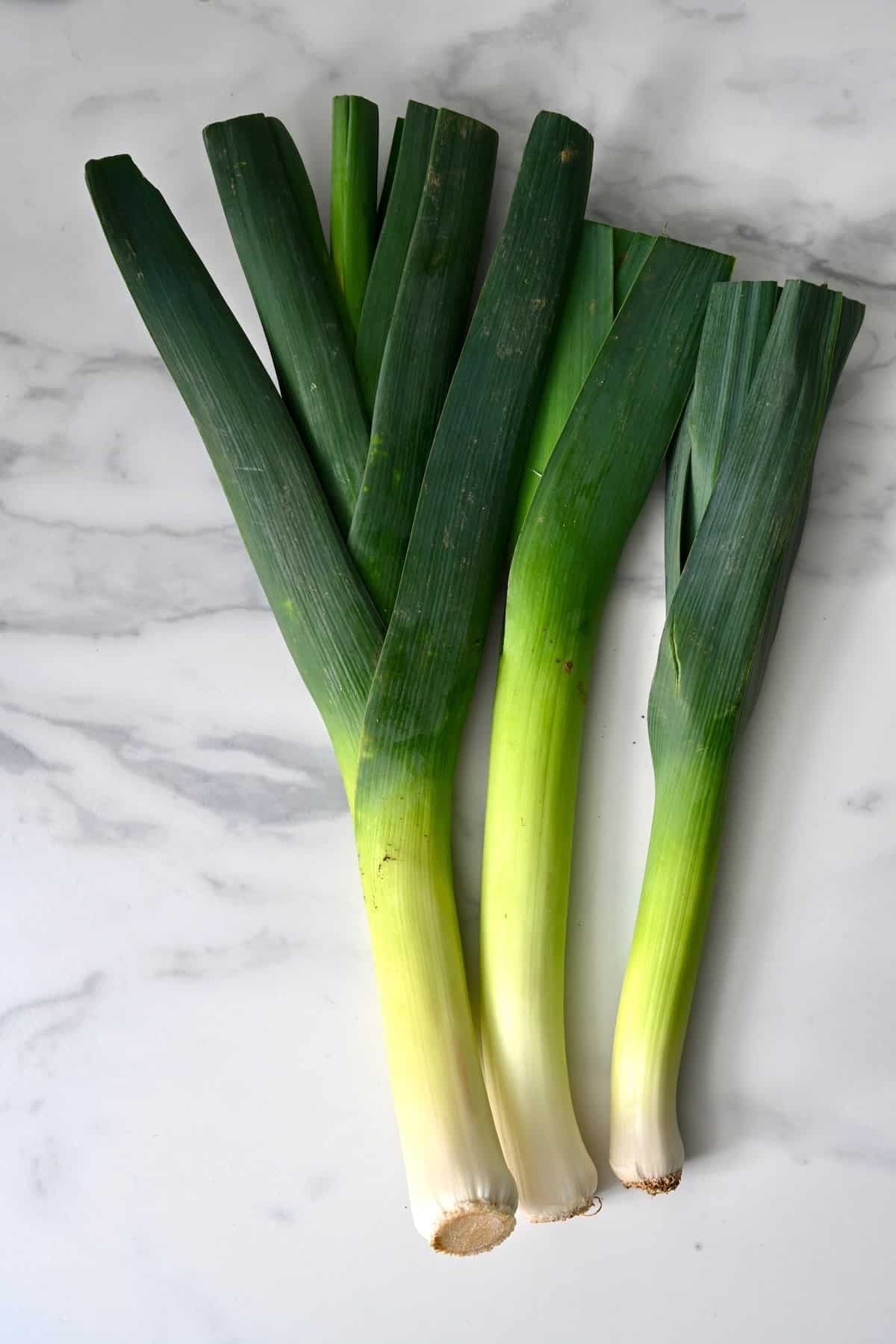
What Do Leeks Taste Like
Leeks are often used as a substitute for onions, so their flavor is not entirely dissimilar. Raw leeks are mild and sweet, with the flavor developing when they’re cooked. There’s a subtle herby flavor to them as well. If you want a leek with maximum flavor, try to pick out a larger one.
How to Cut Leeks
Depending on your leek recipes, you can prepare your leeks in several different ways.
First, make sure to remove the dark green top leaves and the root end of the leek. You will use the white and light green part of the stalks.
Slices: A sharp knife will get you even thin slices of leek. The leek itself can unravel a little when you slice, so this method is best for soups and stews.
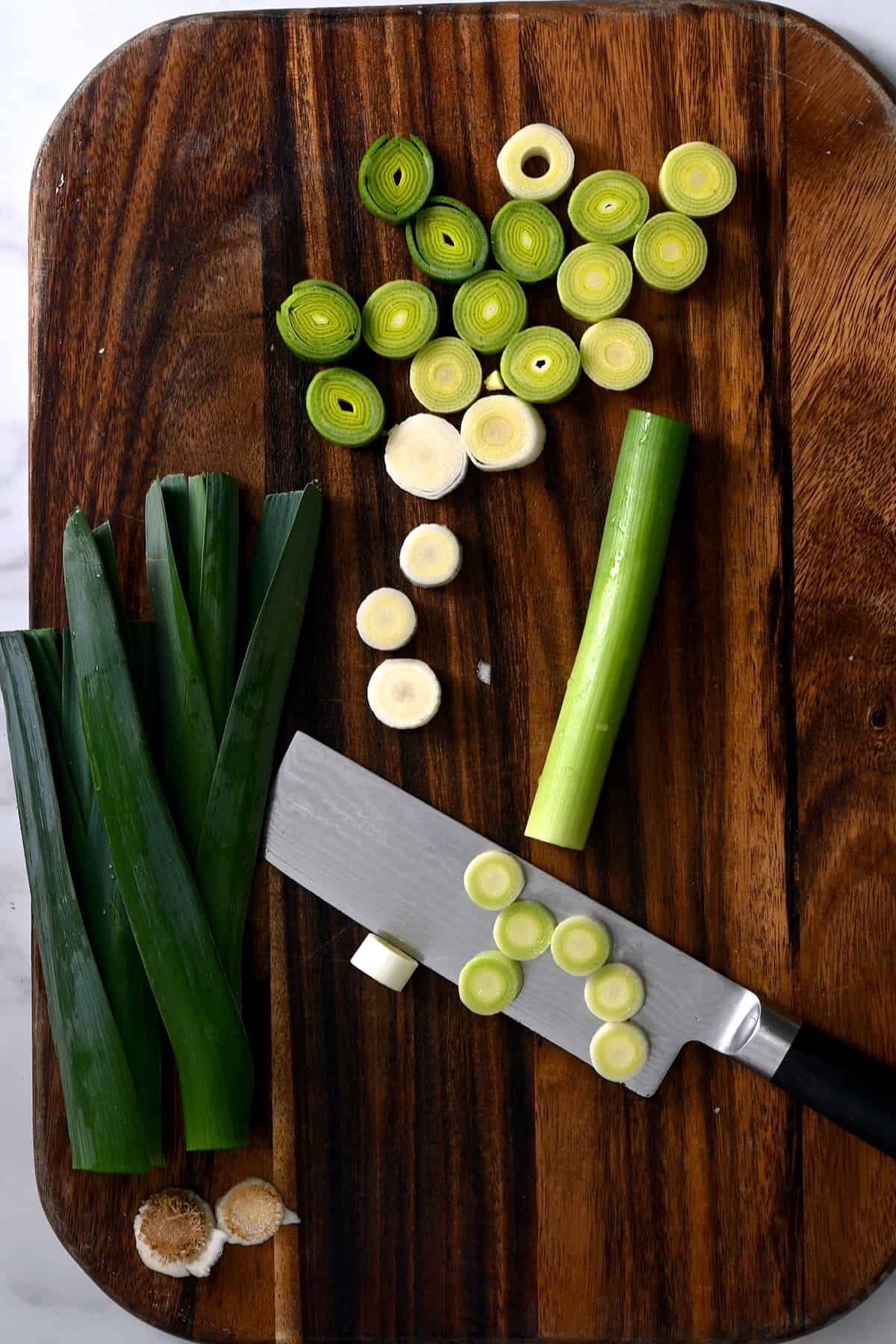
Lengthwise: Place the leek stalk on a cutting board. Then run a sharp knife through the middle of the leek to get whole pieces.
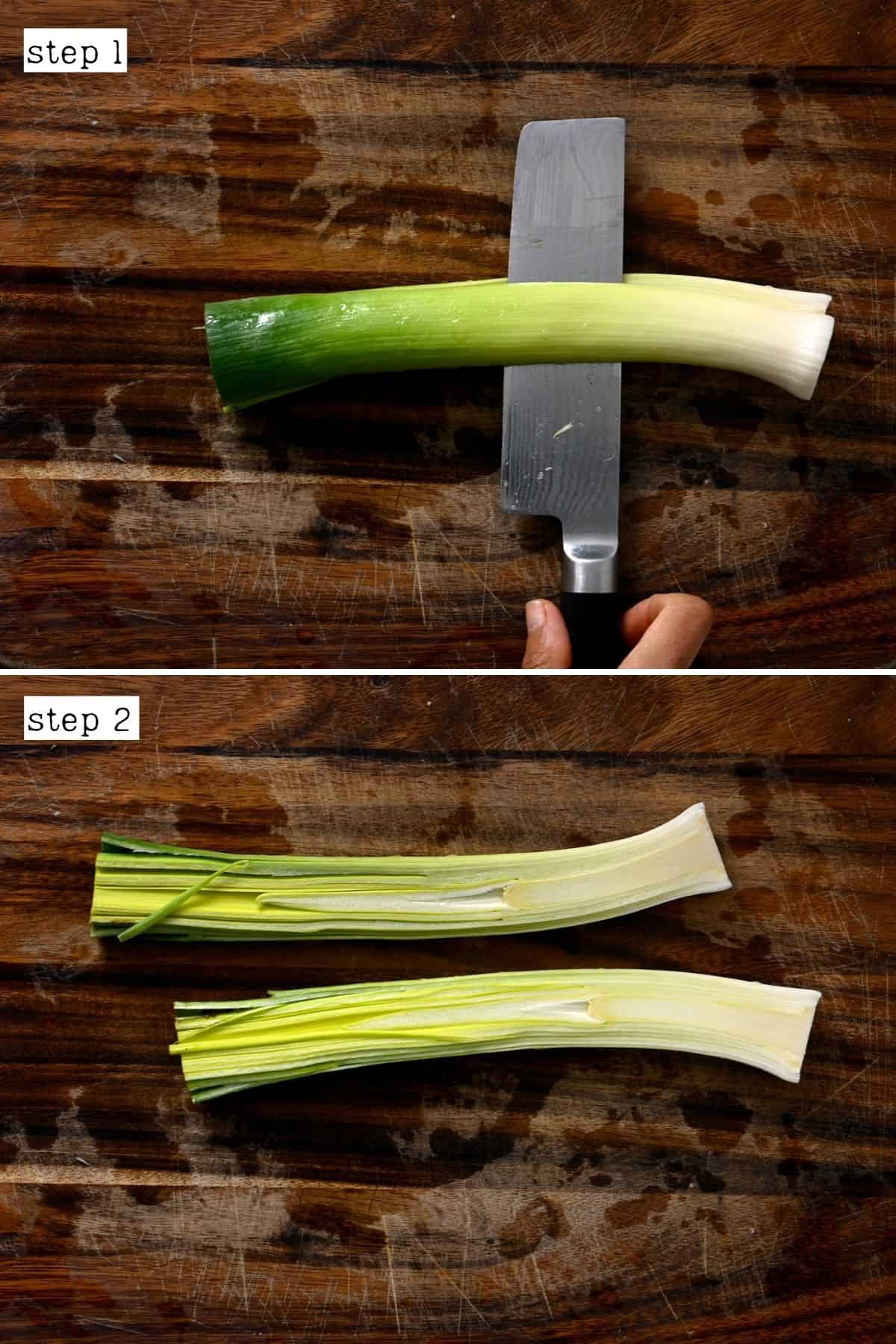
Half Moons: Another option that’s great for soups and casseroles, as well as salads, this involves cutting slices in half.
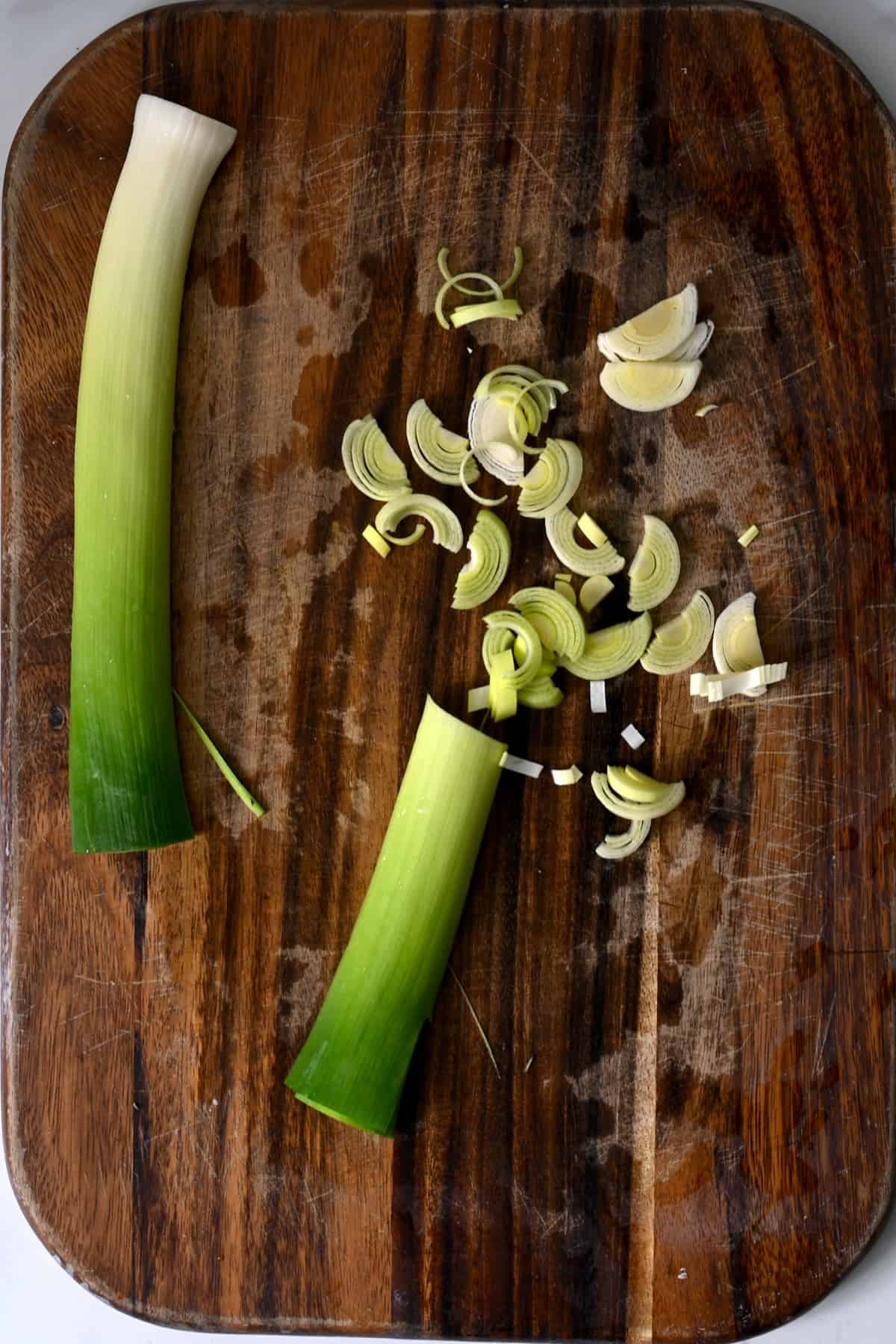
Thins: Known professionally as “julienned”, this involves cutting the leek into thin, short strips that are great for sprinkling over salads, or frying and serving as a side dish.
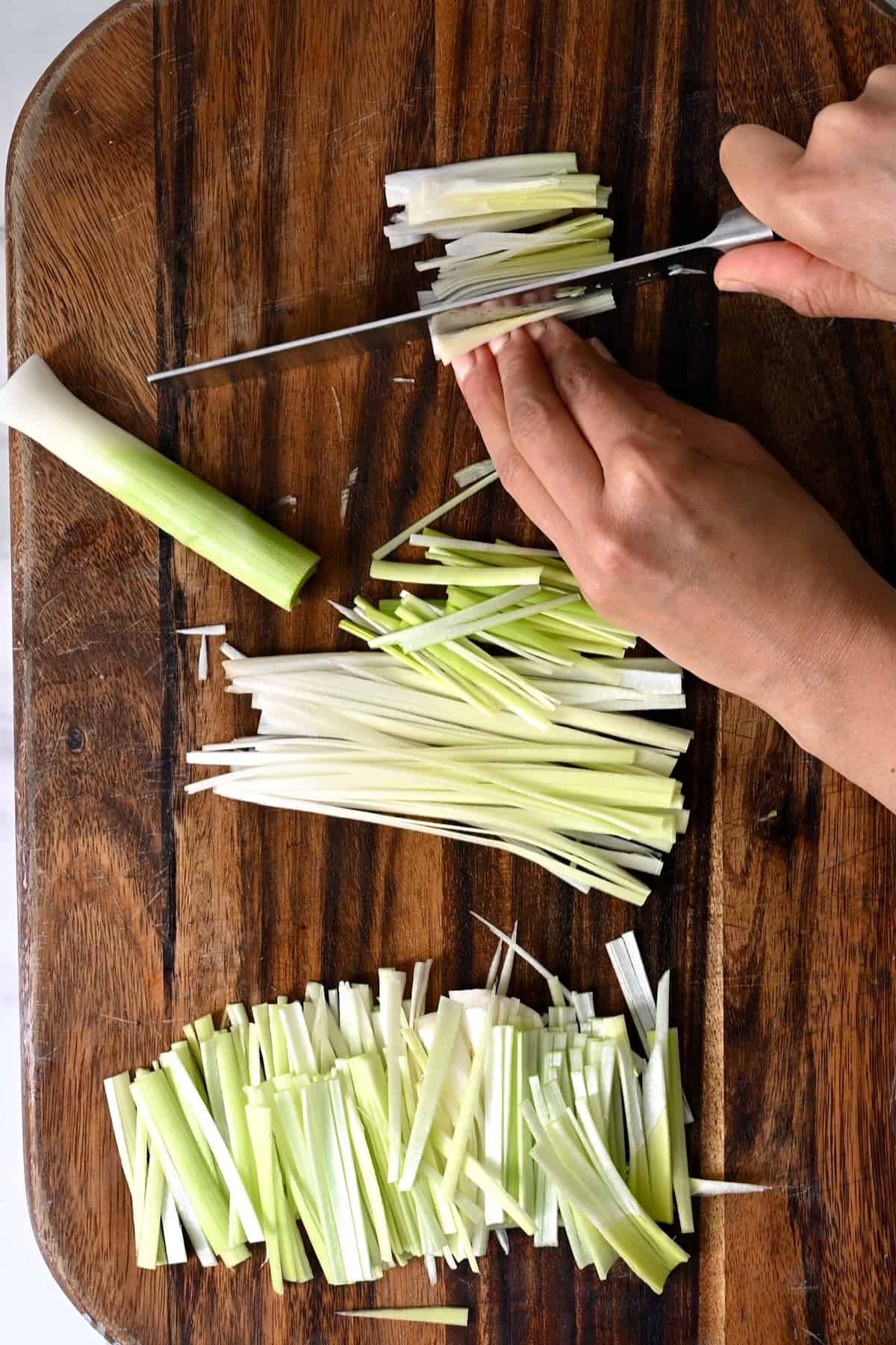
How to Clean Leeks
Once you’ve cut your leeks, place them in a large bowl of water and salt. Leave them to soak. Then, strain the leeks and pour some more water over them (or place them in a colander under running water). Leeks have dirt on the inside between the “leaves”, so be sure to rinse your leeks well before cooking.
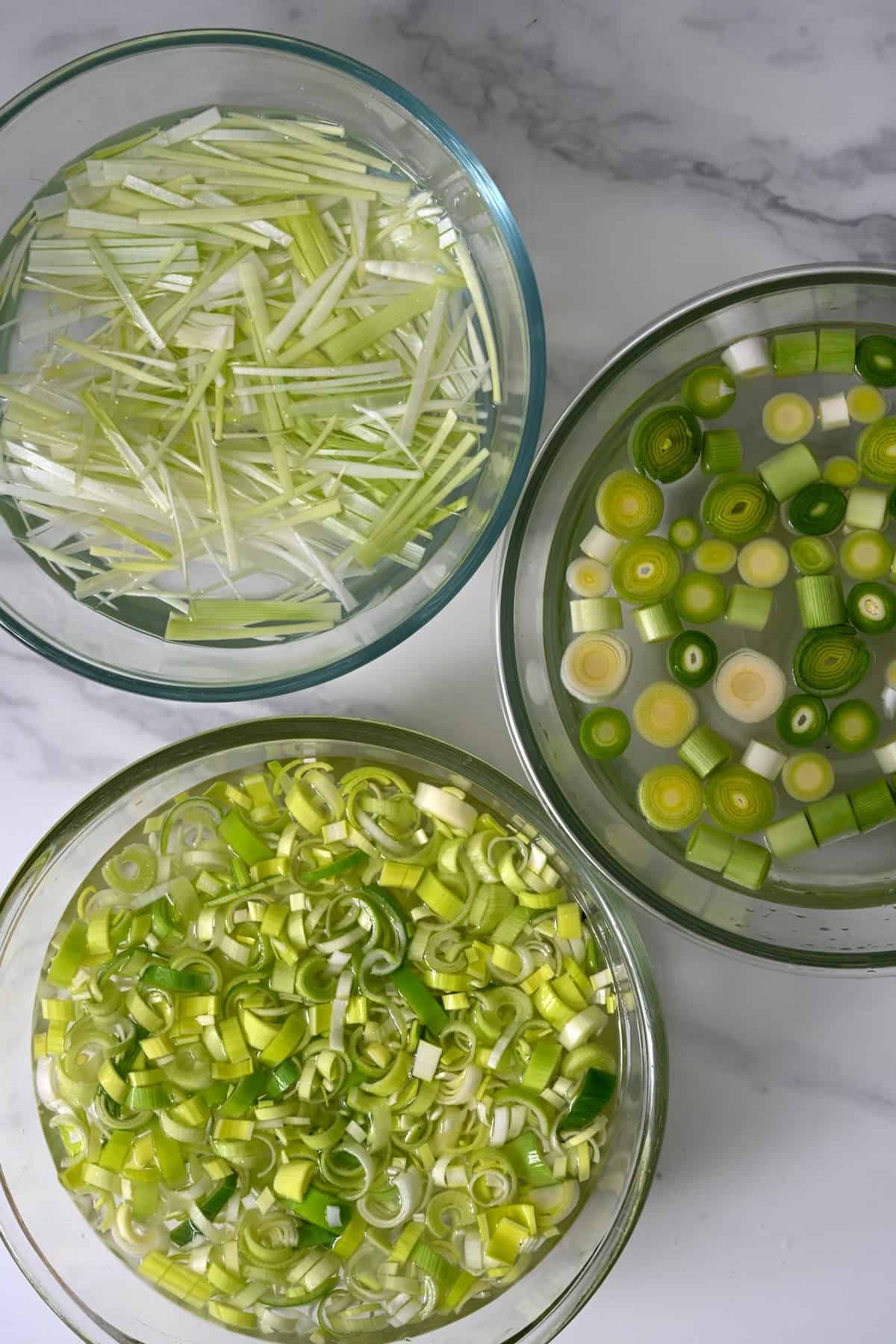
How to Cook Leeks
These are my three favorite ways to cook leeks.
Sauteed in Pan
Heat a pan or griddle and drop in some oil or butter. I prefer using butter because the leek soaks up the flavor and makes it much more tender. Add your leeks to the pan, then season well with salt and pepper. Sauté over medium high heat for 5-6 minutes until the leeks are soft.
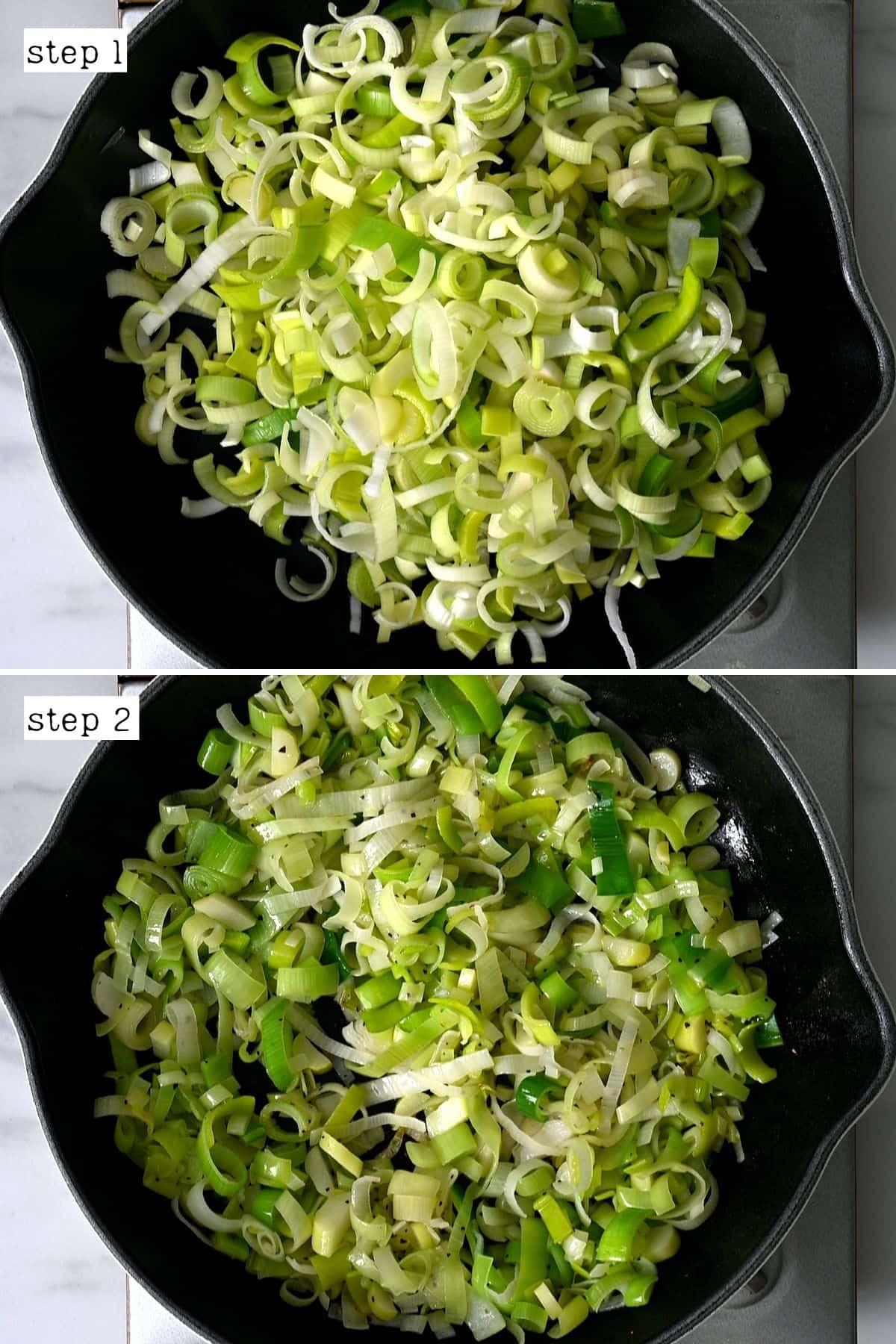
Roasted in Oven
Set your oven to 430ºF/220ºC and prep your leeks. I prefer them cut sliced or lengthwise – as these keep their shape better when roasted – but you can cut them however you like.
You can season to your liking. I like to drizzle the leek with olive oil, sprinkle liberally with salt and pepper, as well as any herbs or seasonings you’d like. Leek is complemented well by thyme, tarragon, chives, and sage, as well as stronger flavors like mustard and garlic.
Roast in the oven at 430ºF/220ºC for about 30 minutes to 40 minutes. Best to check in after 20-25 minutes to make sure the roasted leeks don’t burn.
Grilled in Hot Griller
Excellent addition to a BBQ, you’ll want to cut your leeks lengthwise so they hold their shape. Heat a griddle pan or your BBQ grill until it’s hot. Drizzle or brush the leeks with a little oil and season with salt and pepper. Add to the heat and grill on both sides for 3-4 minutes until grill marks can be seen.
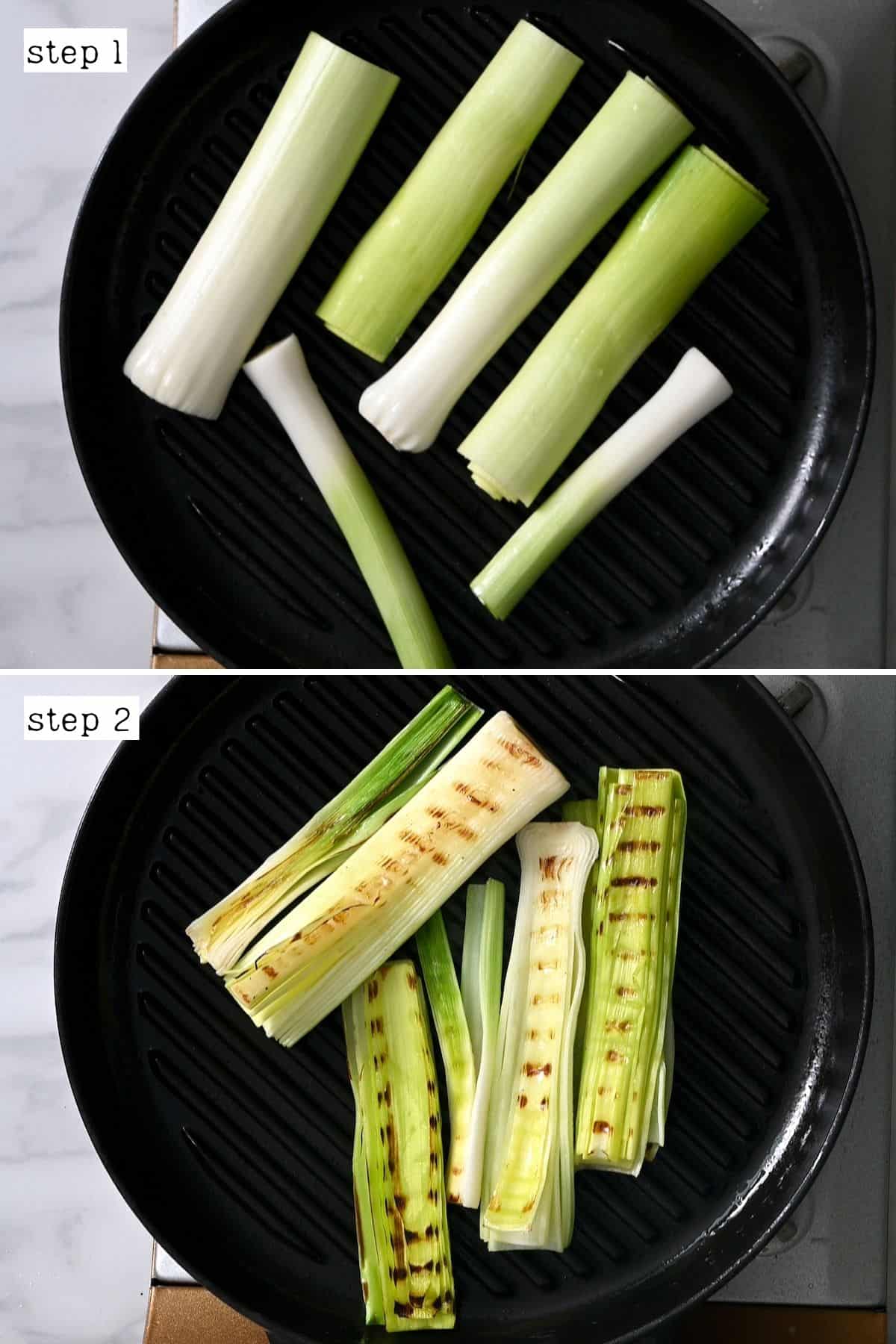
How to Use Leeks
- Sauteed, grilled or roasted as a side dish to a main meal – delicious when drizzled with olive oil. Or compliment them with basil pesto or tomato pesto.
- In soups – chop up and blend with other veggies for a great veggie soup. Even better when paired with potato for a comforting winter soup. Leek and potato soup is a classic.
- In stews – you can replace onions with leek to build your stew base, or chop them up with carrots, squash, and other winter veggies to help bulk up the dish.
- In pasta – keep chunky and incorporate with zucchini and avocado for a delicious green pasta dish, or use in place of onions in sauces.
- In stock – a great way to use up leeks that might be turning bad, leeks add flavor to the veggie stock. Or you can add them as ruffage to traditional meat stocks.
- With eggs – sliced, julienned, or cut into semi-circles, mix the leek with the raw egg mixture and cook for a delicious take on scrambled eggs or an omelette.
- In pizza – cut thin, you can sprinkle these among your favorite toppings for a little green on your pizza.
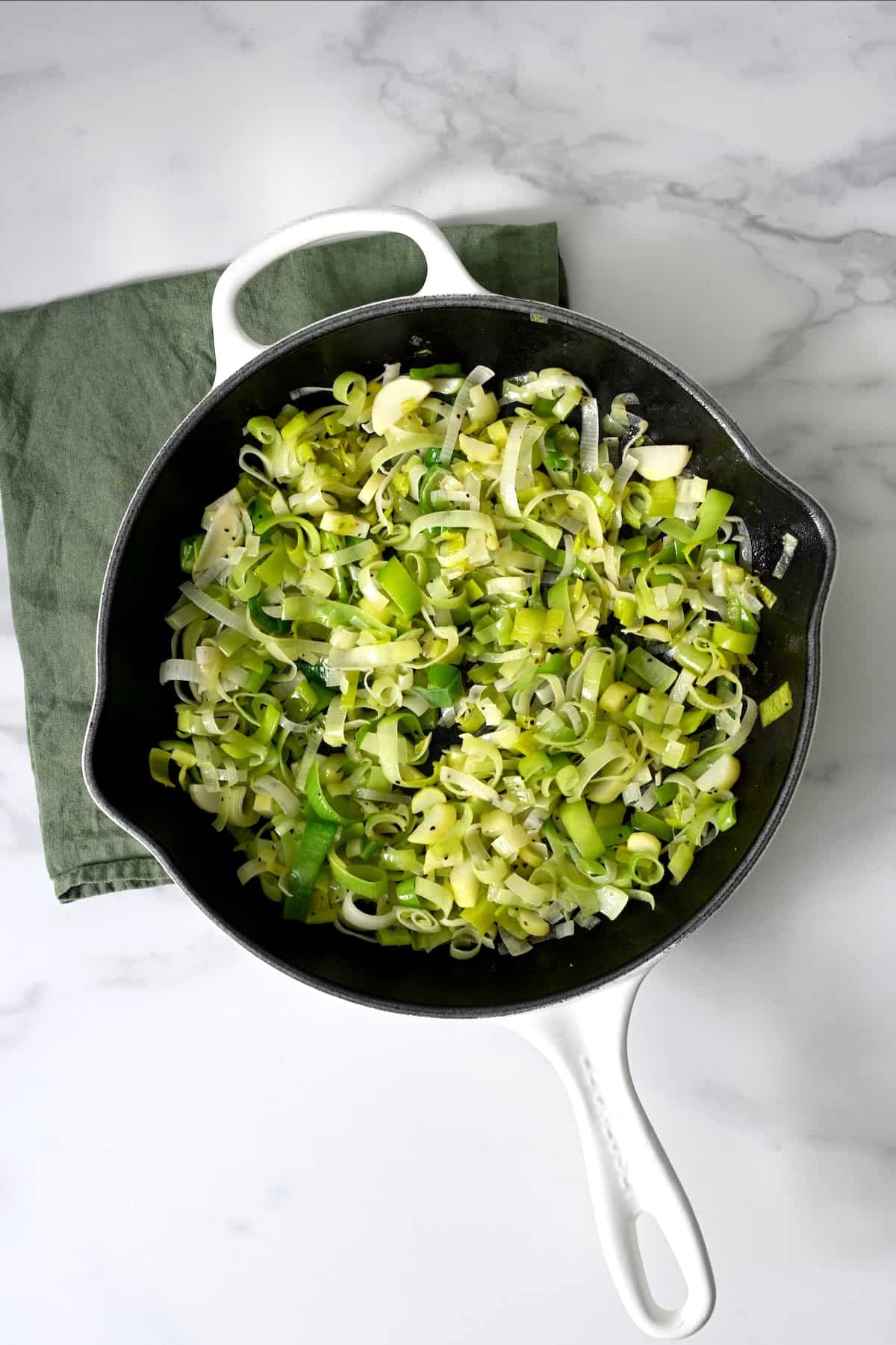
How to Freeze Leeks
Leeks can be difficult to freeze because of their high-water content – they can go mushy very quickly. But there is a way. Blanching your leeks before putting them in a freezer-proof container will help them keep them for longer. This can keep them good for up to a year!
FAQs
Refrigerated, fresh leek can last anywhere from five days to around 2 weeks, depending on how fresh it is. Freezing, pickling, or canning your leeks will keep them safe to eat for months after.
The white and light green part of the leek stalk is what is usually eaten. The dark leafy leaves are removed.
However, you can just cut off the very top parts that are harder and woody. Then just cook the green leaves longer so they become tender – they are just as flavorful as the rest of the leek stalk.
More Leek Recipes
You might also want to check my top tips on cooking fennel and my 6 easy ways to cook broccoli.
If you try any of these methods for how to cook leeks, I’d love to hear your thoughts/questions below. Also, I’d appreciate a recipe card rating below, and feel free to tag me in your recipe recreations on Instagram @Alphafoodie!
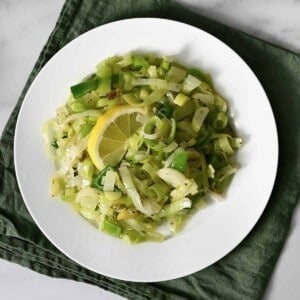
How to Cut Leeks and How to Cook Them
Ingredients
- 9.5 oz leeks about 3 cups chopped; or use as much as wanted/needed
- 1/2 Tbsp olive oil or butter
- salt and pepper to taste
Instructions
How to Cut Leeks
- Make sure to remove the dark green leaves and the root end of the leek.Slices: A sharp knife will get you even thin slices of leek. The leek itself can unravel a little when you slice, so this method is best for soups and stews.Lengthwise: Run a sharp knife through the middle of the leek to get whole pieces.Half Moons: Another option that's great for soups and casseroles, as well as salads, this involves cutting slices in half.Thins: Known professionally as "julienned", this involves cutting the leek into thin, short strips that are great for sprinkling over salads, or frying and serving as a side dish.Refer to the images on the blog post.
How to Clean Leeks
- Once you've cut your leeks, place them in a large bowl of water and salt. Leave them to soak. Then, strain the leeks and pour some more water over them. Leeks have dirt on the inside between the "leaves", so be sure to rinse your leeks well before cooking.
How to Cook Leeks
Sauteed in Pan
- Heat a pan or griddle and drop in some oil or butter. Add your leeks to the pan, then season well with salt and pepper. Sauté over medium-high heat for 5-6 minutes until the leeks are soft.
Roasted in Oven
- Set your oven to 430ºF/220ºC and prep your leeks. I prefer them cut sliced or lengthwise – as these keep their shape better when roasted – but you can cut them however you like.
- Season to your liking. I like to drizzle the leek with olive oil, sprinkle liberally with salt and pepper, as well as any herbs or seasonings you'd like. Leek is complemented well by thyme, tarragon, chives, and sage, as well as stronger flavors like mustard and garlic.
- Roast for about 30-40 minutes. Best to check in after 20-25 minutes to make sure the roasted leeks don't burn.
Grilled in Hot Griller
- Excellent addition to a BBQ, you'll want to cut your leeks lengthwise so they hold their shape. Heat a griddle pan or your BBQ grill until it's hot. Drizzle or brush the leeks with a little oil and season with salt and pepper. Add to the heat and grill on both sides for 3-4 minutes until grill marks can be seen.
Notes
Nutrition
Nutrition information is automatically calculated, so should only be used as an approximation.

